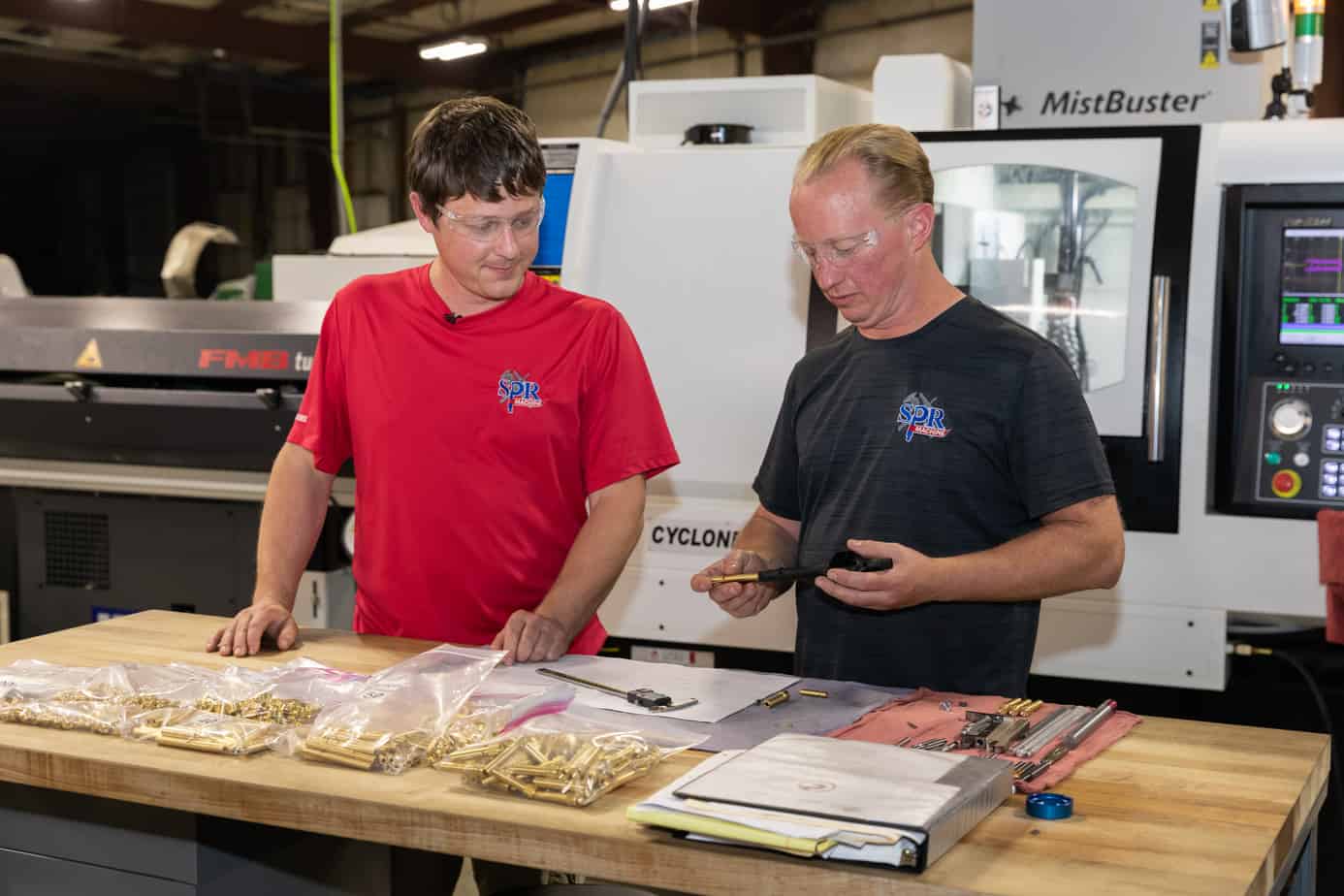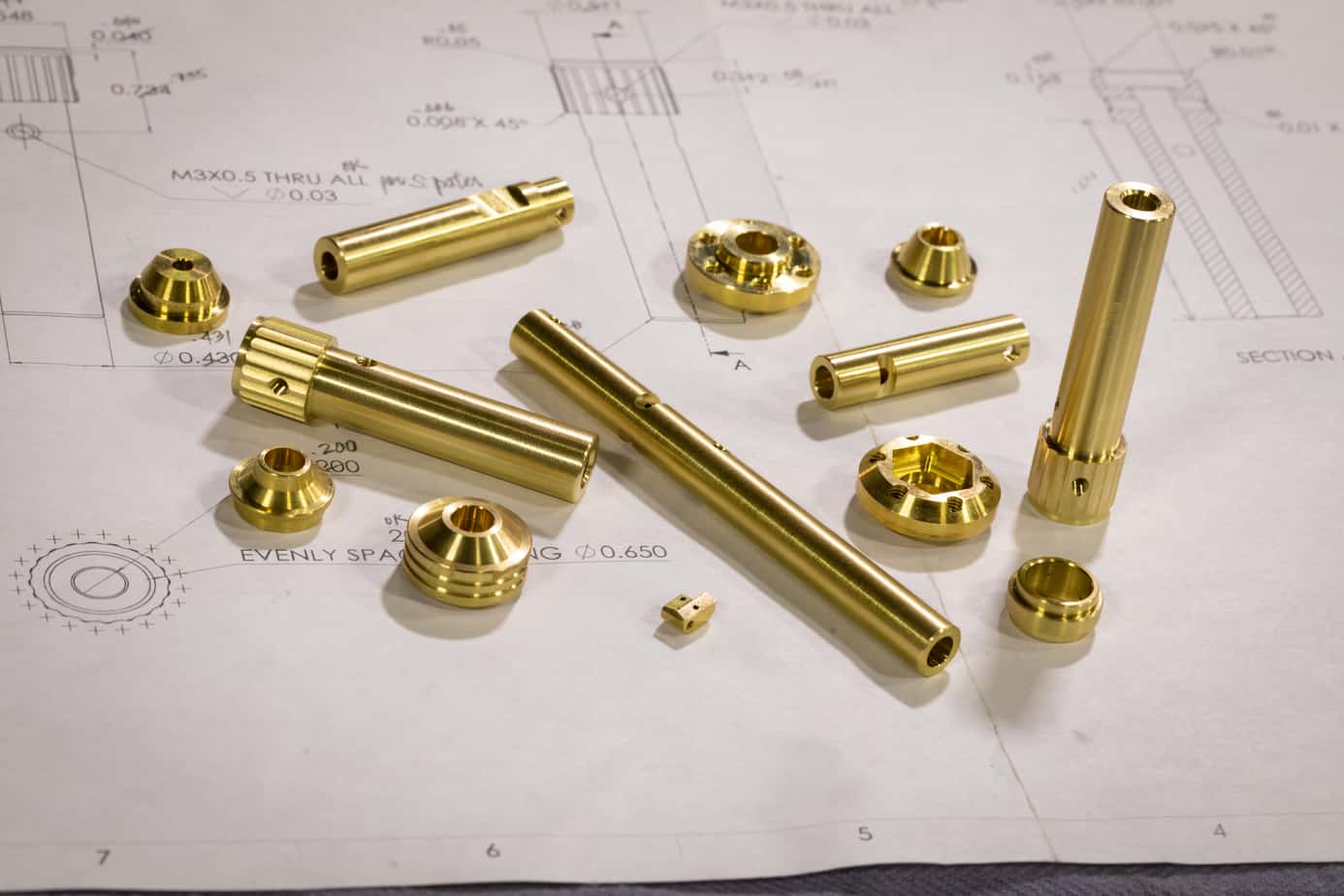Three partners contributed their diverse manufacturing and machining experience—and their last initials—to found SPR Machine in Hamilton, Ohio in 2002. The machine shop has grown from a shop floor with 2,500 ft2 (232 m2) to one with 78,000 ft2 (7,246 m2) filled with 14 mills, lathes, and welding and inspection equipment. SPR produces high-quality work from 60″ (1.5 m) down to 0.0005″ (0.013 mm) for customers predominantly in the aerospace and medical industries.

CNC operator Dave Burton (left) and Scott Pater, co-owner and co-founder of SPR Machine, inspect brass parts machined on a seven-axis Swiss-style Ganesh Cyclone GEN TURN 32-CS lathe. (All images provided by Copper Development Association)
All that talent, experience and entrepreneurial energy make SPR Machine an open-minded shop that approaches new growth challenges with enthusiasm. One of those challenges presented itself in the form of a part-material switch from steel to brass. SPR Machine jumped at the opportunity to see how much cycle time could be saved through high-speed machining. It wound up leading the shop to new equipment, insights, personnel qualifications and a renewed respect for the versatility and machining performance of brass. The opportunity arose when co-founder and company vice president Scott Pater combined his passion to race off-road and radio-controlled (RC) cars with a friend’s engineering expertise. When the friend created a reengineered version of an RC part and began marketing it to hobby shops, Pater showed him that SPR would make a better supplier than a vendor in China, especially given that off-shore ordering meant waiting months for parts. The initial design specified 12L14 steel, a material that corroded and swelled once it was in use, making it difficult to remove the part. Aluminum solved the corrosion problem but lacked the strength and weight needed for stability in a small vehicle with a low center of gravity. Brass offered both, along with an attractive appearance, which was important for a consumer product. In addition, brass didn’t produce the long, stringy bird’s nest chips SPR experienced with other metals, especially in a part with a nearly 4″ (101.6-mm) long drilled through-hole. “Brass is quicker to machine [and produces] chips that flow smoothly out of the machine, and customers like what they see in the finished parts,” Pater said. For this job, Pater invested in the company’s second CNC lathe, a seven-axis Swiss-style Ganesh Cyclone GEN TURN 32-CS with dual 6,000-rpm spindles, 27 tools, linear ways and a 12′ (3.6-m) hydrostatic bar feeder. “Initially, we were running this RC part on an SL10 lathe. We had to run one side, take out the part and flip it around to finish the back,” Pater said. “On the Ganesh, the part is completely done when it comes out of the machine.” With a new machine in house, SPR needed to find the right employee to dive into its learning curve. Operator David Burton, who previously worked in SPR’s deburring department, took on the challenge. In a few months, he learned block coding and G-code for a two-spindle machine and produced the initial program for the part. SPR’s involvement with Cincinnati-based TechSolve, a consulting firm that provides machinability evaluation testing services, led the shop to a unique opportunity to optimize this part in conjunction with the Copper Development Association (CDA), a non-profit trade association that represents producers and users of copper, bronze and brass. In exchange for allowing TechSolve to guide SPR’s production parameters, the shop would gain the ultimate optimization parameters from experts in the machine and the material. In addition to turning, the part initially required ball milling, drilling numerous deep holes, and boring out a bearing surface in the inner diameter. The GEN TURN 32-CS’s multiple spindles and axes saved production time, but Burton’s initial production program yielded a six-minute, 17-second part cycle, which translated to 76 units per eight-hour shift. After SPR implemented TechSolve’s recommendations, cycle time was reduced to two minutes and 20 seconds, and parts per shift skyrocketed to 191. To achieve this optimization, TechSolve identified several areas in which SPR Machine could reduce cycle time. Instead of ball milling, SPR could substitute broaching, ganging up parts and machining five slots at once. That’s a strategy that most likely would not have worked if the part had been made from stainless steel or steel. SPR saved still more time with a carbide drill for pecking, more-aggressive feeds and depths, and fewer retracts, along with an increased depth of cut for roughing. Balancing the workload between the two spindles meant that neither waited for the other to complete a process, which increased throughput. Finally and most importantly, the machinability of brass meant that the process could proceed at high speeds and feeds.

Brass parts designed and machined by SPR Machine play critical roles in space exploration, military telemetry, and medical tools.
SPR Machine allowed TechSolve to optimize the process so the shop could see the gains it could make with brass on other production parts. Burton’s initial production program represented a starting point, and SPR’s own optimizations reduced cycle times further. But the ability to see the full process from analysis through production optimization represented a unique opportunity, as did the use of brass itself. The Copper Development Association enumerated the many advantages of brass that SPR would realize in this project. With high-speed machining, brass made quick work of drilling deep holes, holding accuracy and extending tool life throughout long shifts. Brass also made deburring much easier than in stainless steel or steel machined at high speeds. Because brass requires less machining force than steel, machine wear was reduced as well, with higher speeds producing less deflection. And because brass scrap holds up to 90 percent of its value, SPR was able to cash in machining chips through recycling programs. As Pater said, “Brass offers a large productivity upside. Your equipment is your limiting factor unless you have an advanced tool that can actually handle high-speed machining. By upgrading your machine tools, you can tap into the real potential of brass.” SPR Machine’s lathe department turns more brass than anything else, although the shop as a whole also deals with aluminums, stainless steels and exotic materials, including plastics such as PEEK. Brass parts play crucial roles in space exploration, military telemetry, medical tools and other applications for a “who’s-who” list of customers, many of whom SPR is not permitted to name due to nondisclosure agreements. The types of work of SPR’s workflow takes on divide by tolerances, with roughly half at ±0.003″ (±0.08 mm), and the remainder at ±0.0003″ (±0.008 mm). SPR welcomed CDA’s and TechSolve’s input, and the benefits were mutual. Adam Estelle, CDA’s director of rod and bar, noted that “High-speed machining with brass helps shops justify the investment in new equipment because of the increased revenue and productivity it generates and the new business it makes possible. We are thrilled with the results SPR achieved which should inspire other shops to be more aggressive with brass.”

SPR Machine allowed TechSolve to optimize its machining processes on a variety of brass production parts so that it could see the potential for brass in its other production parts.
Senior TechSolve Engineer George Adinamis lauded SPR for its openness, saying that “SPR shared information and trusted us, which was a big compliment, and the entire process was a total collaboration.” In fact, some of SPR’s customers rely on Scott Pater’s input into part development, part designs and material recommendations, so SPR could make a case for brass on other projects and see its customers adopt its advice. The future looks bright for SPR Machine. Along with the parts it designs and creates for other customers, it has become a supplier itself, creating a tombstone workholding fixture that enables four-axis lathes and mills to work with round and flat bar stock and castings. “Our design offers us more throughput. It’s lighter weight but still very rigid, so a single person can put it on a machine,” Pater said. SPR’s complex background contributes to its innovative approach to projects, collaboration and success, with brass playing a growing role in its workflow. With this collaborative experience to highlight the advantages of working with brass, SPR Machine will be on the lookout for other opportunities to transition parts for greater efficiency and profitability.

Recent Comments